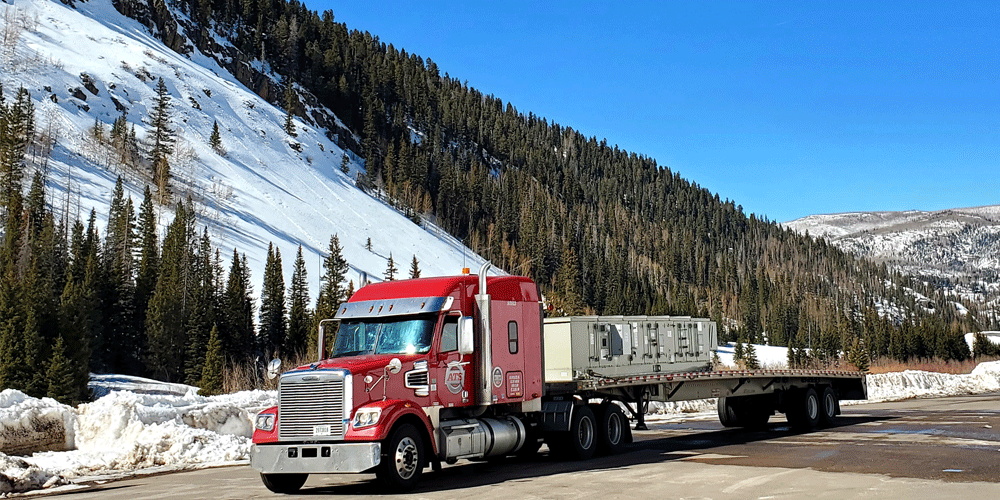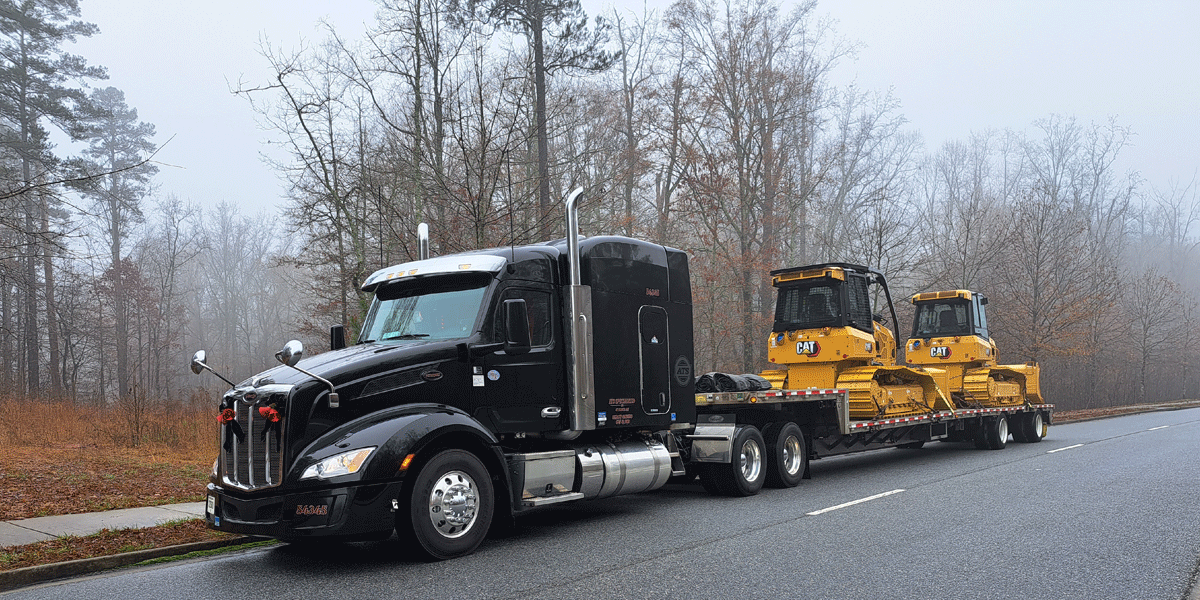Is Regional Truck Driving Right for Me? 7 Pros and 5 Cons
Jamie joined the ATS team in 1993. In his thirty years of tenure with the company, he helped get the ATS regional program set up. He currently acts as a driver manager for drivers running Midwest regional routes. He loves both working with drivers and working for a great company.
As a truck driver, you have a ton of options — from the type of trailer you attach to your truck to the type of freight you decide to haul. You could also decide to work as a company driver or contract with companies and lease (or purchase) a truck.
Choose between over-the-road (OTR), regional and local jobs. Or try a dedicated route that’s either OTR, regional or local. Any combination of these options can help you customize your truck driving path to make it exactly what you need it to be to find success and enjoyment.
We’ve highlighted OTR, local and dedicated trucking before. Now it’s time to do a deep dive into regional trucking so you can learn more about its pros and cons and determine if it’s the right position for you.
I’ve been with Anderson Trucking Service (ATS) since 1993 and I helped get our regional routes set up 20 years ago. I’m familiar with what drivers in the industry do and don’t love about regional trucking.
In this article, I’ll help you understand:
- What regional trucking is
- The pros of regional trucking
- The cons of regional trucking
- How to decide if regional trucking is right for you
By the time you’re finished reading, you’ll have a better understanding not only of what regional trucking is but also how it works at ATS.
What is Regional Truck Driving?
Regional truck driving is a mix of local and OTR driving. Regional drivers drive in a specific geographic region — typically four or five states and within a 1,000-mile radius of their home. Some drivers may go outside that range, though.
Regional drivers go home weekly, often on the weekends. They typically sleep in their trucks four or five nights per week. However, some regional drivers may only spend a few nights per week sleeping in their truck and the rest of the week they’re home.
As a reminder, as a local driver, you’re home daily. As an OTR driver, you might not go home for two or three weeks at a time (or more).
7 Pros of Regional Truck Driving
Because regional driving is a blend of OTR and local driving, you’ll enjoy some of the benefits of both.
1. Go Home Weekly
While local drivers go home every night and OTR drivers might go home every couple of weeks, regional drivers are right in-between and go home weekly. For drivers who enjoy their independence out on the road but still want to see their family every week, this is a nice perk.
2. Enjoy Being Close to Home
Regional driving is not only beneficial because you get to go home weekly, but if something were to happen in the middle of your week, you’re also close to home. For example, if there’s a family emergency, you’re usually within about a day of the house and can get there quickly. This makes it an attractive option for drivers who might not need to be home daily but still want to be closer to home.
As an OTR driver, you could be halfway across the country and days away. That could make it difficult to get home in a timely fashion.

3. Receive Bonus Options
You may have access to bonuses other drivers don’t get. Again, this all depends on the company you work for and how they pay. Some companies may pay an hourly rate or on a cents-per-mile or percentage basis.
Related: Learn more about how ATS pays its drivers.
Some carriers pay drivers a set rate for any nights spent in the sleeper. Because of that, some drivers will elect to stay in their sleeper and travel longer routes. This is a great opportunity for additional pay if your company offers it.
Another bonus you may receive is a backhaul bonus. This occurs when you have nothing to haul on the way back to your home area and your company has you pick up materials or freight to haul on your way back home.
4. Build Relationships
When you drive regional routes, you’re more likely to deliver to the same customer repeatedly. That gives you the chance to build a relationship with them and can help you feel less lonely on the road.
5. Become Familiar with the Region
You may be tied to four or five states, but those states will start to become pretty familiar the longer you drive. As an OTR driver, you’re going across the country on roads you’re unfamiliar with all the time, but you’ll get to know the region you’re driving in and you’ll get a good feel for weather conditions. Knowing your highways, especially during winter weather, can be helpful.
Knowing what to expect can not only make you safer on the roads but it can also save you time if roads are closed down due to weather or an accident. You’ll know other routes to take to avoid sitting in endless traffic waiting for the road to clear up or reopen.
Not having to drive from one climate to the next (like an OTR driver often does) is a nice benefit to some drivers.
6. Avoid Driving in Areas You Don’t Like
If there are some areas you don’t like driving in, as long as you don’t live in that region, you won’t have to. For instance, a lot of the drivers we talk to don’t like driving in the northeast for a variety of reasons. With our Midwest regional route, they don’t have to.
7. Live a More Balanced Lifestyle
This certainly isn’t always the case with drivers, but some drivers find that they can live a more balanced lifestyle as a regional (or local) driver. When you’re out on the road for weeks at a time, you have to find the time and a place to do laundry. You have to grocery shop and refill your cooler or refrigerator.
As a regional driver, those aren’t concerns. Drivers can typically get by without needing to do laundry while they’re on the road or restock their food supply. They have time on the weekend to take care of that when they’re off duty. That also gives them access to healthier foods.

5 Cons of Regional Truck Driving
There are plenty of regional trucking cons that you have to consider before you make it your next move.
1. There Isn’t Much Variety
If you don’t like seeing the same things again and again, regional driving might not be right for you. You’ll be driving in the same region day after day seeing sights you’re already familiar with. It can feel monotonous and boring to some drivers. However, if you don’t mind the routine, regional might be fine for you.
2. You May Have to Unload A Lot
When compared to local driving, regional driving tends to consist of a lot fewer deliveries. As a local driver, you’re often loading and unloading several times per day. As a regional driver, you often have a shorter length of haul so you might unload and reload once per day. For instance, an ATS regional driver typically hauls four or five loads per week — one per day.
This can be difficult to manage. You may spend a lot of time waiting to get loaded or unloaded and little time driving. This can be frustrating — especially if you spend most of your hours waiting, not driving.
Again, though, how often you load/unload depends on the company you’re working with and their customer base so be sure to clarify this before you start with the company.
3. You May Have to Drive Through Big Cities
Regional drivers often have to drive through major cities to do deliveries. Having to navigate busy city streets and additional traffic can be especially stressful. Local drivers often deal with this — they’re doing a lot of city driving — but OTR drivers deal with this far less.
4. You Won’t Have as Much Freedom
An OTR driver is typically dispatched on a load and then spends several days driving the open road. They set their schedule and get to explore the whole countryside. When you’re an OTR driver, you’ll be confined to one region, and for some drivers, that can feel constricting.
Combined with strict customer deadlines, regional drivers sometimes feel like they don’t have much freedom.
5. You’ll Probably Earn Less than OTR Drivers
Typically, regional drivers don’t make as much as OTR drivers because they don’t run as many miles. This is especially true if you’re spending a lot of time waiting at a shipper or receiver and you aren’t compensated while you wait.
When you’re a regional driver, your earnings will sit somewhere between OTR and local driving — earning less than an OTR driver but more than a local driver.
Is Regional Trucking Right for You?
When you’re making your decision, come to the table with a list of priorities and goals. Which position — local, regional or OTR — will help you reach those goals?
Oftentimes, it comes down to pay and how often you can get home. A lot of drivers like regional routes because they get to come home every week and they still make decent money. They may find local driving tough because they’re delivering loads several times a day and they may find OTR trucking tough because they’re on the road for so long.
Regional trucking is a good next step to take if you’re a local driver who’s considering if OTR trucking is right for you. It offers benefits of both local driving and OTR trucking and it can help you become more familiar with driving more miles and staying on the road longer.

Become a Regional Driver Today
In many ways, regional truck driving provides the best of both worlds for drivers who aren’t sure if they want to pursue local or OTR driving. Regional drivers get home weekly, become familiar with the region, can build strong relationships, get paid well and are still close to home in case of emergencies.
Before you pursue regional driving, be sure you understand what it has to offer compared to local and OTR routes.
You’ll also want to find a company that can meet your needs.
At ATS, we have open positions for van regional drivers in the Midwest and the Southeast. Take a look at our operating areas to see if you live within them and enjoy more time at home and great pay.
When you start as a regional driver with ATS, it’s an easy segway into OTR driving if that’s something you decide to pursue.
